The new Fox Transfer is a superb infinitely adjustable hydraulic seatpost with a consistent and smooth stroke that offers speed modulation via the remotes lever input. It replaces their extremely dependable and durable three-position mechanical D.O.S.S. post and features an all new internal system that resides in the upper shaft.
The Transfer uses a nitrogen spring and hydraulic cartridge design with options of 100, 125 or 150 mm of travel and 356mm 406mm 456mm lengths, respectively. The cable actuated hydraulic height-adjustable seatpost uses a handlebar mounted remote which is separately available in two options for $65 each, a left side below the bar for a 1x setup and a left/right on the bar for 2x/3x gearing. The Transfer comes in 30.9mm, and 31.6mm diameter sizes and utilizes a zero offset saddle clamp with a 2-bolt attachment system. It comes internal and externally actuated routing versions, and is available in a Factory model with the Kashima Coat for $314, and a Performance model with Black anodization for $264.
Measured Specs (150mm x 31.6):
- Post – 588 grams
- 1x remote – 27 grams
- 2x remote (w/ noodle) – 27 grams
- Total (post/remote) – 615 grams
Routing
The internal cable routed Transfer version that I tested attaches directly to the bottom of the post and reverses the typical actuation connection system. The Fox setup has the cables head residing in a small bushing which then slots into the actuator arm, and the cables free end gets clamped at the remote. The design offers an easy to use tool-free installation and disconnection system.
The external Transfer has the cable directly attached to the main body or outer tube of the post. This design provides better management since the cable connection remains stationary during the saddle’s movement, and it offers a cleaner and more direct routing line to the seatpost and removes issues with excess housing. The cable housing stop can also be rotated 60° forward or backward from its default vertical position to allow for the required routing.
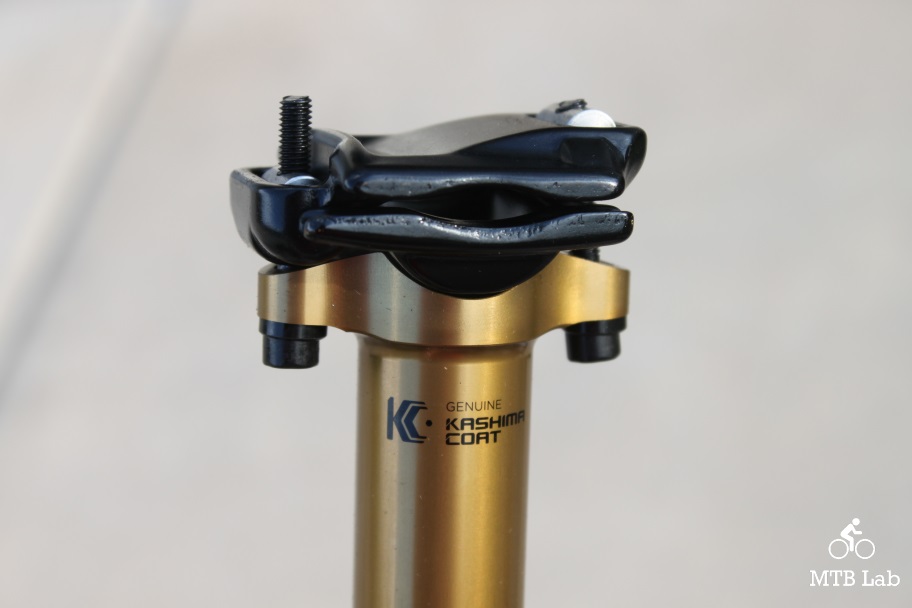
Saddle
Fox utilizes a one-piece stanchion design with an integrated zero-offset head for the saddle clamp. It features a standard 2-bolt attachment system that offers a micro adjustable head for easy changes of the tilt, and fore-and-aft placement of the saddle. Underneath the clamp’s cradle is an access port to the internals and cartridge, and according to Fox, there is a 400 psi nitrogen gas charge in there!
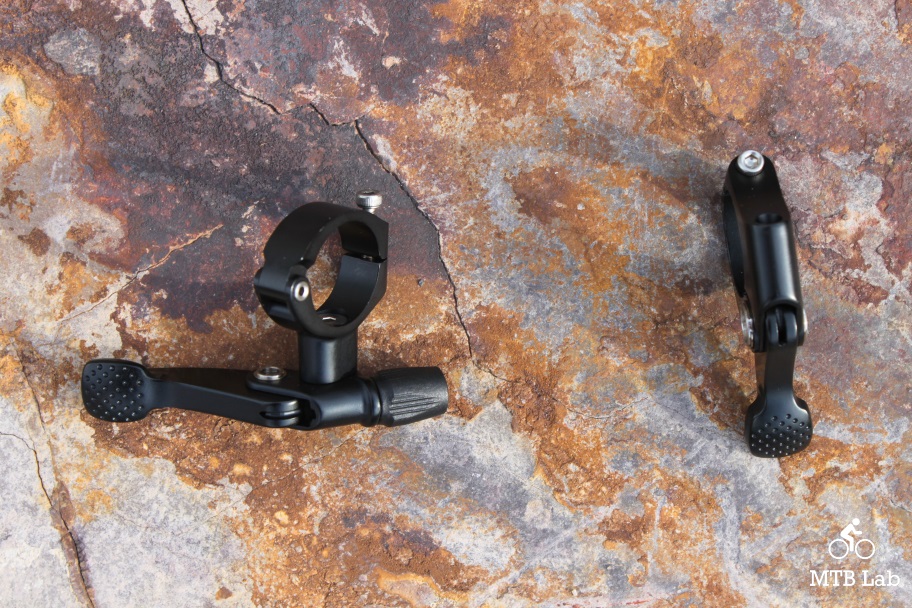
Remote Levers
Fox has thankfully replaced the large and gangly dual paddle D.O.S.S. remote for two new smaller remotes, one for 1x setups and the other for 2x/3x (neither comes with the post.) The under the handlebar 1x remote offers a horizontally positioned paddle and sits on the left side of the bike in the same location once occupied by a front shifter. The 2x/3x remote with its vertically oriented lever can reside on either side of the bars, though it will likely be on the left snugged up against the grips. For easier installation, the remotes are hinged and have barrel adjusters, and the cable from the post gets clamped with a set screw, and its clipped end can be cleanly tucked out of the way in a small slot on the backside of the remote. The 2x/3x remote utilizes a noodle with an integrated barrel to help with routing the larger loop of housing.
Internal Routing Installation
I installed the 1x remote on the left side of my handlebars and snugged it up against the brakes and then routed the internal housing through my bike and cut it to the required length. I inserted the cable into the bushing until the head was seated and pushed the cable through the housing from the seatpost end and then slotted the bushing up onto the actuator arm and seated the housing ferrule. While keeping healthy tension on the protruding cable at the lever end, I pushed the seatpost into the frame to my desired height and tightened it in place. I then pushed the cable through the remotes barrel adjuster and out through its slot. After removing slack in the housing and cable, I tightened down the set screw and cut off the excess cable, crimped it in place and tucked it into the slot on the backside of the lever. The 2-bolt saddle system was simple to use and the micro adjustable head made for easy changes of the tilt, and fore-and-aft placement of the seat. After installing everything, it needed a few turns of the barrel adjuster to get things properly tuned.
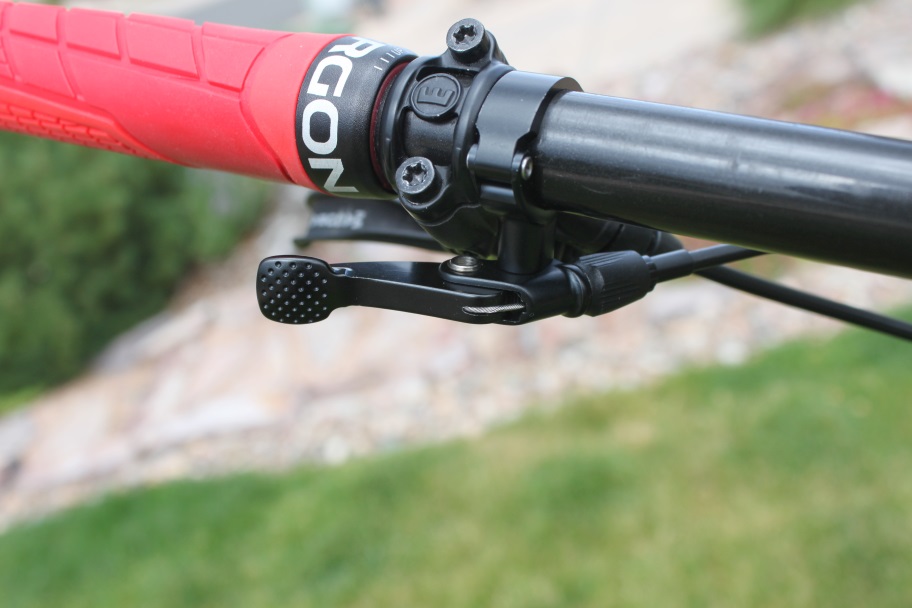
Internals
When the remote is depressed the cable actuation arm pushes on a rod that then runs through the center of a hollow shaft to a piston at the other end, and it opens up ports that allow oil to flow through to facilitate the seatposts travel. Once the lever is lifted the oil ports are closed, and the post will lock in its current position. At the center of this primary piston is a spring backed spool valve which is a cylindrical piece that alternately blocks and opens oil flow paths depending on the remotes actuation. The design ensures consistent and controllable speed modulation, lower lever forces and smoother action. The top of the cartridge has a pressure relief valve that equalizes pressure differences due to thermal expansion, heavy use and altitude changes.
Impressions
I have used the Transfer for several months now, and the remotes lever action, the seatpost actuation, and movement have been smooth, consistent, and dependable. Using the system is quite easy, just press and hold the lever, and either weight the saddle into the lower positions, or unweight, and let it pop up to the desired location, and then release. The remotes lever have a consistent and smooth feel and excellent ergonomics, offering up a light and controllable release with a slightly long lever throw when fully engaged. The 1x remote lever was easy to reach though it sits out too far and I needed to roll my thumb off the grips more than I would have liked.
Throughout its stroke, the travel has a silky smoothness without any notchiness or stiction. The bottom inch of travel ramps up slightly when it hits the nitrogen charge, but it still gives a solid thunk when it seats, and it will fly up quickly to the top position with a resounding thud. It doesn’t rebound as fast as the D.O.S.S. but it’s quicker than other comparable hydraulic dropper posts on the market, and it was always dependable. When the remote was fully engaged, the dropper speed was perfectly functional and fast, and I appreciated its almost instantaneous ability to change positions.
I liked how easy it was to make micro-alterations in the travels position, and you could modulate the speed with how far you pushed the lever via its internal spool valve design. Creep the lever in just a tad and the post moved slowly, crank it fully down and it post went at full speed. You can feather the lever and get tiny adjustments along with using light body weight on the saddle, all of which combine for surgical like precision. It was slightly easier to choose the position when moving down, though a tad of weighting allowed me to focus towards an upward location. I could pretty much stop it exactly where I wanted to in either an upper or downward movement no matter what the terrain was like, which was extremely beneficial for technical climbs and maneuvering.
I didn’t feel any slop or play in the system other than a micro amount of twisting which was held securely in place by the internal anti-rotation pins. After tuning the saddles positioning with the easy to use 2-bolt clamp system, I haven’t suffered any creaks, slipping or rotations, even with some accidental body slamming onto the saddle. The saddle stays securely locked in positioned when the lever isn’t engaged, and it didn’t lift when grabbed while the post was down, which is useful when hike-a-biking or tossing the bike around.
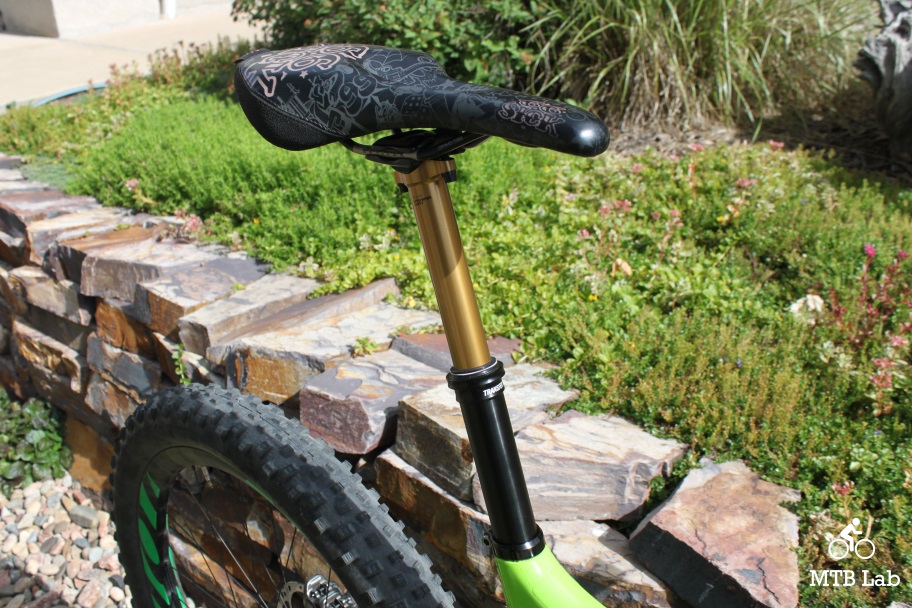
Bottom Line
I am highly impressed with the Fox Transfer, and the cable actuated infinitely adjustable seatpost which uses a hydraulic cartridge and a nitrogen gas spring for movement and locking, is full of innovative designs and features. It has a silky smooth stroke without any stiction or notchiness and offers dependable and consistent operation. The internal piston and spool valve design provides excellent speed modulation depending on how far the remotes lever is pushed, and it was easy to make micro-alterations in the travels positioning. When fully open it offers quick travel adjustments from the top to the bottom of the stroke and everything in between. I don’t have a long-term reliability judgment as yet, but it does look promising considering it’s predecessor and their suspension expertise.
It comes in Kashima Coat (Factory) and Black anodized (Performance) models, with internal or external cable routing, 100, 125 and 150mm drop options, and two lever designs (1x and 2x/3x).
MSRP: $264 Performance, $314 Factory, $65 remote – refer to www.ridefox.com for additional information.
Pros
- Silky smooth movement
- Easy cable installation – Tool-free quick disconnect/connect
- Ability to modulate speed with lever engagement
- Dependable and quick travel adjustments
Cons
- 1x lever sticks out too far
- Unknown long term dependability
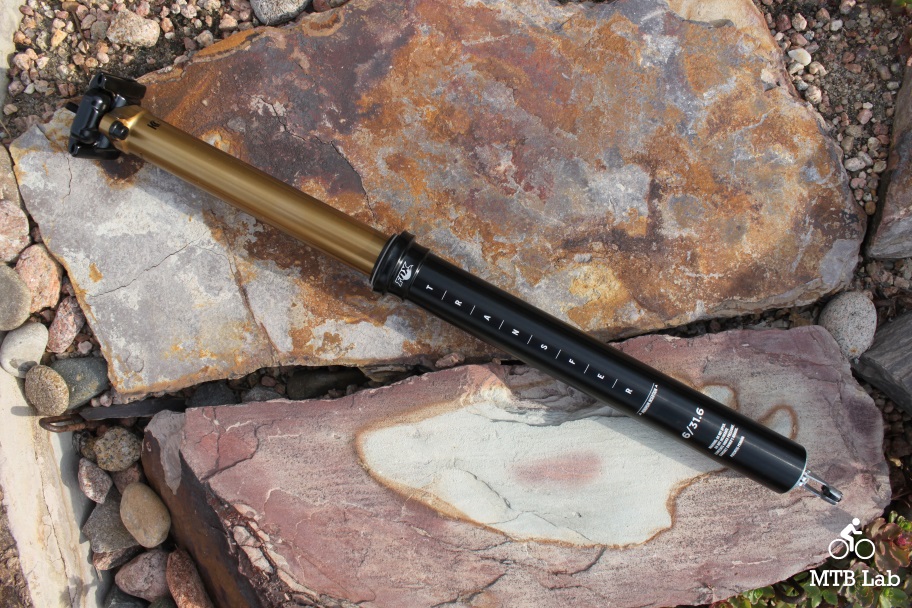
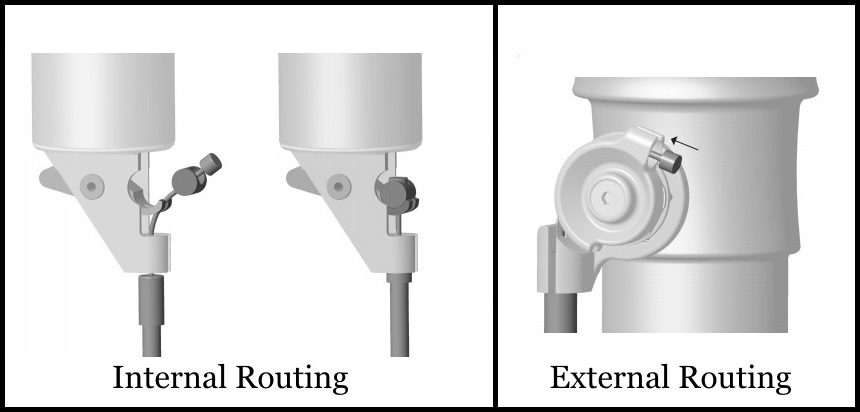
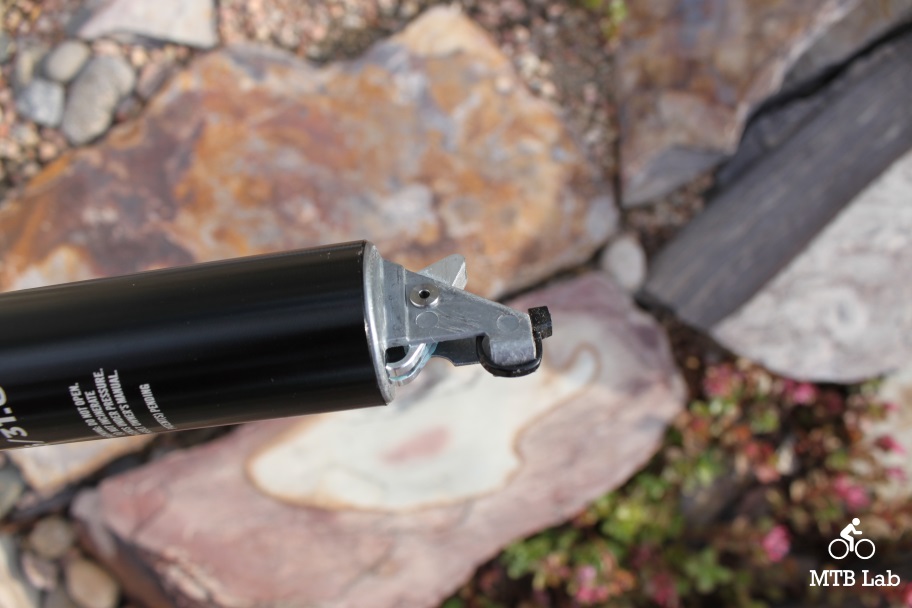
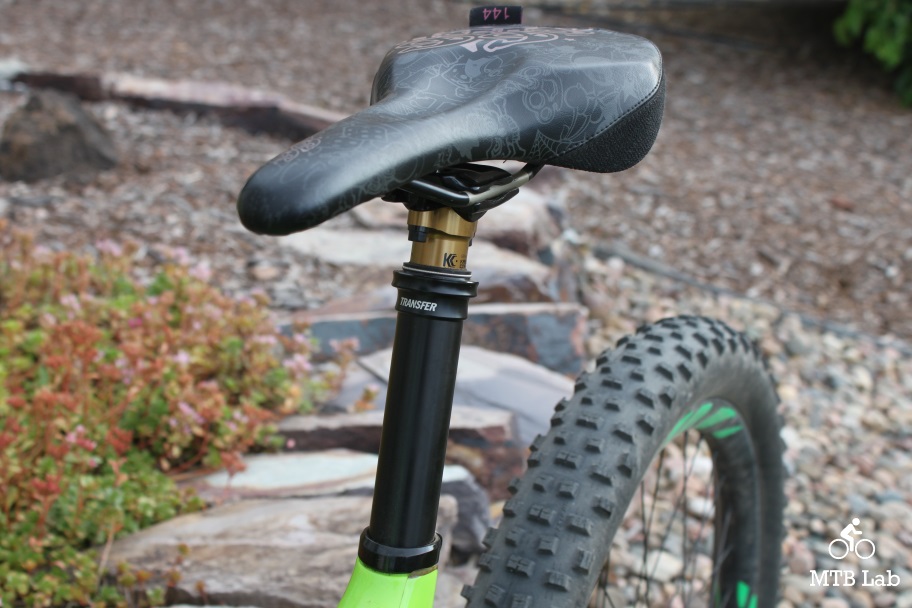





{ 2 comments… read them below or add one }
I just installed a external transfer post and it has quite a bit of play, I can jiggle it enough to where the tip of saddle moves 1/4 inch,It is the stanchion moving back and forth, haven’t even rode it yet. Is this normal? seems like it will be clunking when I am sitting on it and peddaling.
Mark,
Which direction is the play? Is it play in a rotational movement along the horizontal axis? Or vertical? The seatpost has a Key Way lock to prevent rotation and is sort of unique since it had a small amount of play during movement and right after a positional change, but as soon as it’s lightly weighted it becomes very minimal. Meaning it has designed in play when unweighted and when weighted (sitting on it) the play decreases.
Brian